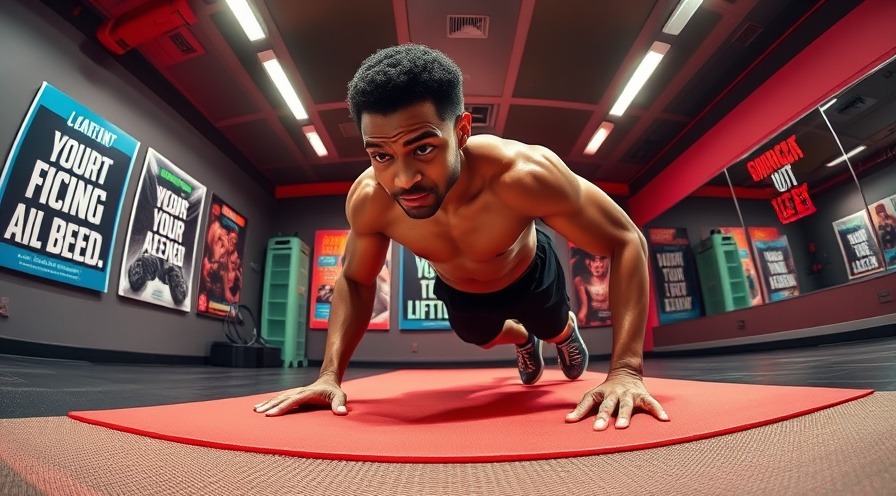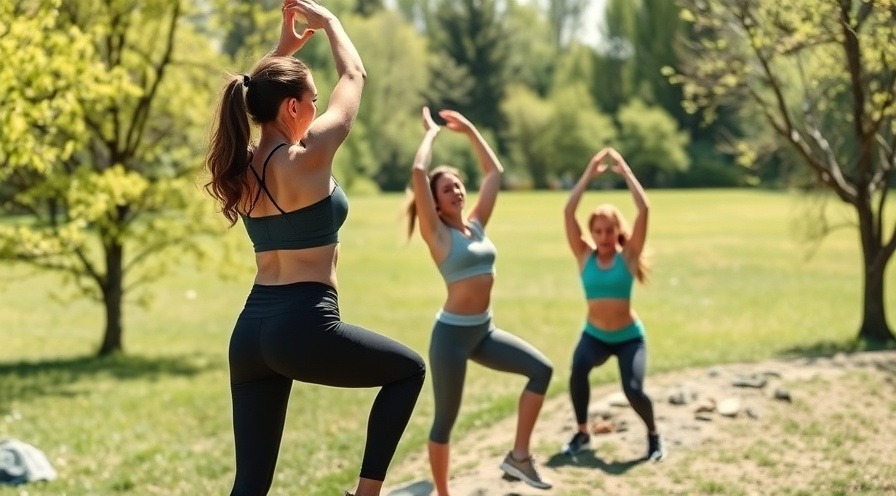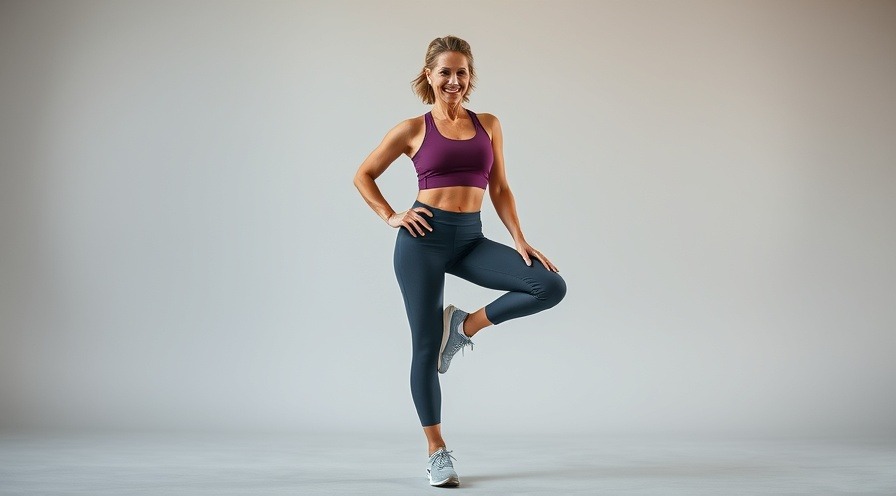
Is it really possible to build muscle fast without ever stepping foot in a gym or lifting a single weight plate? Discover how bodyweight exercises for muscle building can deliver quick, sustainable gains, challenging the myth that only weights yield enhanced muscle mass!
Are Bodyweight Exercises for Muscle Building the Secret to Quick Strength Gains?
Bodyweight training flips traditional weight workout thinking on its head, showing you don’t need a room full of iron to build strength and foster muscle growth.
Movements like push-ups, bodyweight squats, and glute bridges scale with your abilities, targeting major muscle groups from your upper back to your core using only your own body weight .
-
Bodyweight exercises for muscle building are accessible, cost-effective, and can be done anywhere, making them perfect for any fitness goal —from first push-up to advanced single-leg squat!

Unlocking the Science Behind Bodyweight Exercises for Muscle Building
Muscle Growth Explained: How Bodyweight Work Stimulates Muscle Mass
When you perform a bodyweight exercise, your muscle fibers contract forcefully under tension, just as they would under weights. Muscle growth (hypertrophy) occurs as those fibers adapt to new stress by getting larger and stronger over time. Exercises like push-ups and squats activate multiple muscle groups—from the upper body and lower back to core stabilizers—challenging your body in a coordinated way. This full-body engagement triggers robust adaptations that rival traditional weight training.
The secret lies in manipulating sets and reps and consistently demanding more of your muscles, whether it’s holding a plank position parallel to the floor or progressing to tougher movements. With the right volume and technique, bodyweight work offers the perfect environment for muscle mass growth, helping you surpass strength plateaus without external weights.

The Role of Progressive Overload in Bodyweight Training
Just like with a weight workout, progressive overload is the cornerstone of bodyweight training . Increasing the challenge is essential for continuous muscle gains. You can progress by adjusting the difficulty of exercises (e.g., going from knee push-ups to decline push-ups), boosting the number of sets and reps, or modifying the tempo and range of motion. Every tweak adds a new stimulus for muscle adaptation, keeping your workouts fresh and muscles growing.
Bodyweight exercises, when planned thoughtfully, allow for endless progression. This can be as simple as adding a pause at the bottom of your squat or as advanced as mastering single-arm push-ups. Continuous overload ensures you consistently break muscle fibers and rebuild them stronger, much like a traditional weight training program—but using only body weight.
For those interested in how bodyweight routines can translate into real-world strength and support daily movement, exploring simple functional strength workouts that support everyday life can provide practical strategies to enhance both muscle building and overall functionality.
Building Muscle and Strength With Minimal Equipment
The beauty of bodyweight exercises for muscle building is their simplicity: you need little to no equipment to activate large muscle groups. Moves like inverted rows, pull-ups, or the classic glute bridge can be done with just a bar, a bench, or even a sturdy table. The accessibility and versatility of bodyweight workouts empower everyone to work toward their fitness goal , no matter their environment or resources.
With creative programming—like rearranging movement patterns (push, pull, and core) or introducing new angles—you can target every major and supporting muscle group. Even as you advance, simple household items or park structures provide ample resistance to continue building muscle and strength effectively.
Comparing Bodyweight Workouts and Weight Workouts for Building Muscle
Bodyweight Exercises for Muscle Building |
Traditional Weight Training |
|
|---|---|---|
Muscle Mass |
Effective hypertrophy when using advanced variations and progressive overload |
Highly effective, easier to isolate certain muscles and precisely adjust load |
Strength Gains |
Build strength via increased reps, angles, and movement complexity |
Build maximal strength with controlled increases in resistance |
Flexibility |
Higher, as you train functional movement patterns and ranges |
Good, but can be limited by machine movement paths |
Accessibility |
Unrivaled: anywhere, anytime, no equipment needed |
Requires access to gym or equipment |
Risk of Injury |
Lower risk with proper form; lighter impact on joints |
Potentially higher, especially with heavy loads and poor form |
Bodyweight vs. Weight Training: Pros and Cons for Muscle Growth
The decision between bodyweight and weight training depends on your goals and lifestyle. Bodyweight work offers flexibility and accessibility, making it easier to stick to a workout plan. You can perform functional compound movements that increase muscle mass and strength across the entire body. Additionally, you minimize equipment-related risk, with each exercise teaching control and balance vital for daily movement.
Traditional weight workout programs grant granular control over resistance through barbells, dumbbells, and machines, which is effective for breaking muscle plateaus and targeting muscle groups individually. However, this approach often necessitates gym access, higher costs, and greater injury risk, especially as the weights increase. Ultimately, combining both may deliver the best results for building muscle and maintaining overall health.
Range of Motion, Progressive Overload, and Adaptability
Proper range of motion is crucial for both types of training. In bodyweight training, you’re challenged to move through full arcs—think deep squats or push-ups with chest parallel to the floor—stimulating all fibers of the muscle for optimal growth. Adapting exercises and adding advanced variations, such as plyometric push-ups or pistol squats, keeps the muscle stimulus fresh and effective.
"You don’t need heavy equipment to spark muscle growth—your body is the ultimate tool."

Crafting an Effective Bodyweight Workout Plan for Muscle Building
How to Structure a Bodyweight Training Plan for Building Strength
A solid workout plan for building muscle starts with clarity: set defined goals, such as increasing the number of pull-ups or mastering tough push-up variations. Begin with a warm-up to prepare your joints and boost circulation, then move into compound movements targeting the upper body, lower body, and core. Organize your workout routine with 3-4 main exercises (push, pull, legs, core), performed in sets and reps specific to your fitness level and designed for progressive overload.
Progress gradually—master the basics before chasing advanced progressions. Always keep your technique sharp and your body weight moving through its full range. Cool down with stretches to enhance flexibility and recovery. This approach prevents injury and ensures your body has the time and stimulus to build muscle and strength efficiently.
Key Movement Patterns for Muscle Mass: Push, Pull, and Core
The most effective bodyweight exercises for muscle building focus on three movement patterns: push, pull, and core. Push-based moves (like push-ups and dips) work the chest, shoulders, and triceps, while pull exercises (pull-ups, inverted rows) target the upper back, biceps, and forearms. Core moves like planks and mountain climbers stabilize the trunk, allowing you to transfer force between upper and lower body efficiently.

By creating workouts revolving around these patterns, you stimulate all major muscle groups for balanced, functional hypertrophy and reduce your risk of muscular imbalances, leading to faster, safer muscle growth overall.
Beginner, Intermediate, and Advanced Bodyweight Workout Routines
For beginners , start with fundamental moves: bodyweight squats, knee push-ups, plank holds, and assisted pull-ups. Aim for full range of motion and good form before increasing reps.
Intermediates can progress to regular push-ups, glute bridge variations, lunges, mountain climbers, and negatives on pull-ups, focusing on form and steady increases in volume or difficulty.
Advanced trainees should challenge themselves with single-leg squats (pistol squats), archer push-ups, explosive pull-ups, and dynamic plank variations. Add advanced glute bridge for serious lower body growth, and experiment with high-rep, high-set routines and tempo training for continued results.
Top Bodyweight Exercises for Muscle Building Targeting Major Muscle Groups
Bodyweight Squat & Its Variations for Lower Body Strength
The standard bodyweight squat is a foundational move for developing explosive strength and muscle in the quads, hamstrings, glutes, and even the lower back. By progressing through variations—like jump squats, Bulgarian split squats, and single-leg pistol squats—you constantly force your muscles to adapt, paving the way for ongoing muscle growth and strength improvements without external weights.

Push-Ups: Building Muscle Mass in Chest, Shoulders, and Triceps
Push-ups are a universally effective bodyweight exercise for building upper chest, shoulders, triceps, and even the core. Variations like decline push-ups and diamond push-ups allow progressive overload by recruiting new muscle fibers. Focus on slow, controlled reps to boost tension and maximize gains in muscle mass, ensuring your elbows stay close to your body and your torso remains in a straight line from head to heels.
Bodyweight Glute Bridge: Igniting Lower Body Muscle Growth
The glute bridge —done with just your body weight—targets glutes, hamstrings, and lower back. For maximal muscle building, progress from two-legged bridges to single-leg or elevated versions, focusing on squeezing at the top. This movement also improves core stability and reduces lower back discomfort by strengthening the full posterior chain.
Mountain Climbers & Mountain Climber Variations for Core and Cardio
Mountain climbers are a dynamic bodyweight exercise that fires up the core while improving endurance and heart health. By driving your knees toward your arms in plank position, you challenge your obliques, shoulders, lower back, and hip flexors. Add variations, like cross-body or slow-tempo mountain climbers, to spike the difficulty and accelerate muscle gains in the core.

Essential Upper Bodyweight Exercises: Pull-Ups, Dips, Inverted Rows
Essential Lower Bodyweight Exercises: Lunges, Single-Leg Squats
Core Muscle Building: Plank, Side Plank, and Leg Raise Variations
"Consistency in your bodyweight workout routine trumps equipment every time."
Progressive Overload in Bodyweight Training for Building Muscle
Adapting Your Bodyweight Exercises for Continued Muscle Growth
Stagnation kills muscle progress; adaptation ensures it. Continue growing muscle by gradually evolving your bodyweight exercises. Change up your workout routine by increasing difficulty—add pauses, try single-arm or single-leg moves, or reduce rest between sets. The key is listening to your body and targeting weak points, so you never plateau and always chase challenging new angles of muscle stimulation.
Tracking your reps, sets, and progress in a training journal will help you spot stagnant phases and identify when to ramp up the challenge or tweak your routine for maximal results.
Increasing Intensity: Reps, Sets, and Advanced Variations
Intensity is about more than just doing more reps. To keep challenging your muscles, manipulate sets and reps , reduce rest times, or choose advanced moves—like archer push-ups or explosive glute bridges. If you’re looking for more resistance, hold isotonic positions (like a bottom squat hold) or use household items like a loaded backpack for added weight. Mastering these strategies brings continuous muscle growth, even after years of bodyweight work.

Utilizing Range of Motion and Tempo for Strength Training
Optimizing range of motion and controlling tempo (speed of movement) are powerful methods to make every rep count. Lower slowly into your push-up, squat a little deeper, pause at the end of a movement, and then press up powerfully. Full range and varied tempos boost time-under-tension—a catalyst for muscle mass and strength gains—without equipment.
Creating a Realistic Bodyweight Workout Routine for Sustainable Gains
How to Schedule Your Bodyweight Exercises for Maximum Muscle Growth
To maximize gains and prevent burnout, structure your bodyweight workout routine with 3-5 sessions per week, allowing a rest day between tough sessions for optimal recovery. Alternate upper/lower bodywork or mix full-body routines with focused core days. Prioritize compound exercises and ensure progression every week—whether by adding more reps, reducing rest, or advancing to harder exercise variations.
Tracking Progress and Avoiding Plateaus in Bodyweight Work
Progress is motivation—document your accomplishments by writing down each session’s exercises, sets and reps, how you felt, and what you plan to improve next. When you see your numbers stalling or workouts feeling easy, it’s time to introduce new challenges or adjust variables. Consider tracking metrics like time held for planks, or time to complete a full body workout , for a fuller picture of your improvement.
"A structured bodyweight workout plan will yield ongoing muscle gains and improved physique."

Balancing Nutrition and Recovery With Bodyweight Exercises for Muscle Building
Critical Nutritional Principles for Muscle Mass Gain
Building muscle with bodyweight exercise relies on high-quality nutrition as much as training itself. Eat enough protein (lean meats, dairy, legumes), carbohydrates (whole grains, fruits), and healthy fats to fuel muscle recovery and growth. Consider prepping balanced meals in advance to keep your nutrition on track and ensure your body has the building blocks needed for muscle mass.
The Role of Rest and Recovery for Optimal Muscle Growth
Just as you can’t out-train a poor diet, you can’t build muscles without recovery. Prioritize 7–9 hours of sleep, incorporate stretching, foam rolling, or light yoga, and allow muscles worked at least 48 hours before repeating intense sessions. Recovery keeps your joints and connective tissue healthy, locks in gains, and ensures that every rep in your workout routine is productive and safe.

FAQ: Debunking Myths About Bodyweight Exercises and Muscle Building
Can I Build Muscle With Just Bodyweight Exercises?
Absolutely. You can build muscle with just bodyweight exercises by progressing through tougher movements, increasing sets and reps, and ensuring great nutrition and rest. Overload is the key—vary your approach often and push your body out of its comfort zone.
What Is the 3-3-3 Rule Gym and How Does It Relate to Bodyweight Exercises?
The 3-3-3 rule is a simple approach: choose three exercises, perform three rounds, with three sets or reps per round. This method gives structure and intensity to bodyweight workouts, easily adapted for all levels by switching exercises or increasing rounds and reps for progressive overload and continual challenge.
Is It Possible to Build Muscle Without Weights?
Yes, building muscle is fully possible without weights. Bodyweight training , when designed for progressive overload and varied enough to challenge the entire body, supports muscle mass gains comparable to traditional gym workouts—especially for novice to intermediate trainees.
What Is the 6-12-25 Rule for Muscle Hypertrophy?
The 6-12-25 rule involves three back-to-back exercises: one at six reps (strength focus), another at twelve (hypertrophy), and a last at twenty-five (endurance). This pattern can be adapted to bodyweight exercises, creating a muscle-building stimulus that covers multiple athletic qualities in a single session.

What You'll Gain From Mastering Bodyweight Exercises for Muscle Building
Enhanced muscle mass and overall strength
Adaptability to train anywhere, anytime
Cost-effective and sustainable fitness routines
Improved body control, flexibility, and core strength
Long-term healthy workout habits without equipment dependency
People Also Ask
Can I build muscle with just bodyweight exercises?
Yes, you can build muscle with just bodyweight exercises by progressively increasing the difficulty and volume of your workouts, ensuring proper nutrition, and allowing adequate recovery. Progressive overload, such as adding reps, sets, or exercise variations, is essential for gains.
What is the 3-3-3 rule gym?
The 3-3-3 rule means three exercises, three rounds, and three sets of repetitions, providing a simple yet challenging format that works with any bodyweight workout routine to drive intensity and progression.
Is it possible to build muscle without weights?
Yes, bodyweight training can stimulate significant muscle mass gains when you focus on progressive overload and challenging movements regularly in your routine.
Practical Tips to Start Your Bodyweight Exercise Muscle Building Journey
Set realistic goals and select appropriate training progressions
Prioritize perfect form for every repetition
Consistently track your progress and adjust as needed
Get comfortable with being uncomfortable—challenge yourself!
Stay patient and persistent for sustainable muscle growth
"Transformation begins with a single rep—commit today and build muscle with your own bodyweight."
Resources and Tools to Enhance Your Bodyweight Workout Plan
Mobile apps that provide guided routines and track progress
Workout trackers for journaling reps, sets, and personal bests
Online communities offering encouragement and shared strategies
-
Professional coaching or personalized video guides

Final Thoughts on Bodyweight Exercises for Muscle Building and Achieving Sustainable Results
Bodyweight exercises for muscle building offer unmatched versatility, empowering anyone to start or elevate their fitness journey. Your body is your gym—start optimizing your routine, and proven muscle growth is within your reach!
If you’re ready to take your muscle-building journey to the next level, remember that staying consistent and motivated is just as important as the exercises themselves. For actionable strategies to keep your momentum strong and your goals in sight, check out these essential tips for staying on track with your fitness goals . By combining smart training with proven goal-setting techniques, you’ll set yourself up for lasting results and a healthier, stronger you. Let your commitment fuel your transformation—your best progress is just ahead.
To further enhance your understanding and application of bodyweight exercises for muscle building, consider exploring the following resources:
“The Top 10 Bodyweight Exercises for Muscle & Strength” : This comprehensive guide details effective bodyweight exercises, including push-ups, pull-ups, squats, and lunges, complete with instructions and recommended sets and reps. ( usa.lamuscle.com )
“The 7 Best Bodyweight Exercises for Effective Muscle Building” : This article highlights seven key exercises such as push-ups, pull-ups, and pistol squats, offering progression tips to help you build muscle without equipment. ( smartwod.app )
By incorporating these exercises and strategies into your routine, you can effectively build muscle and strength using just your body weight.
 Add Row
Add Row  Add
Add 




Write A Comment